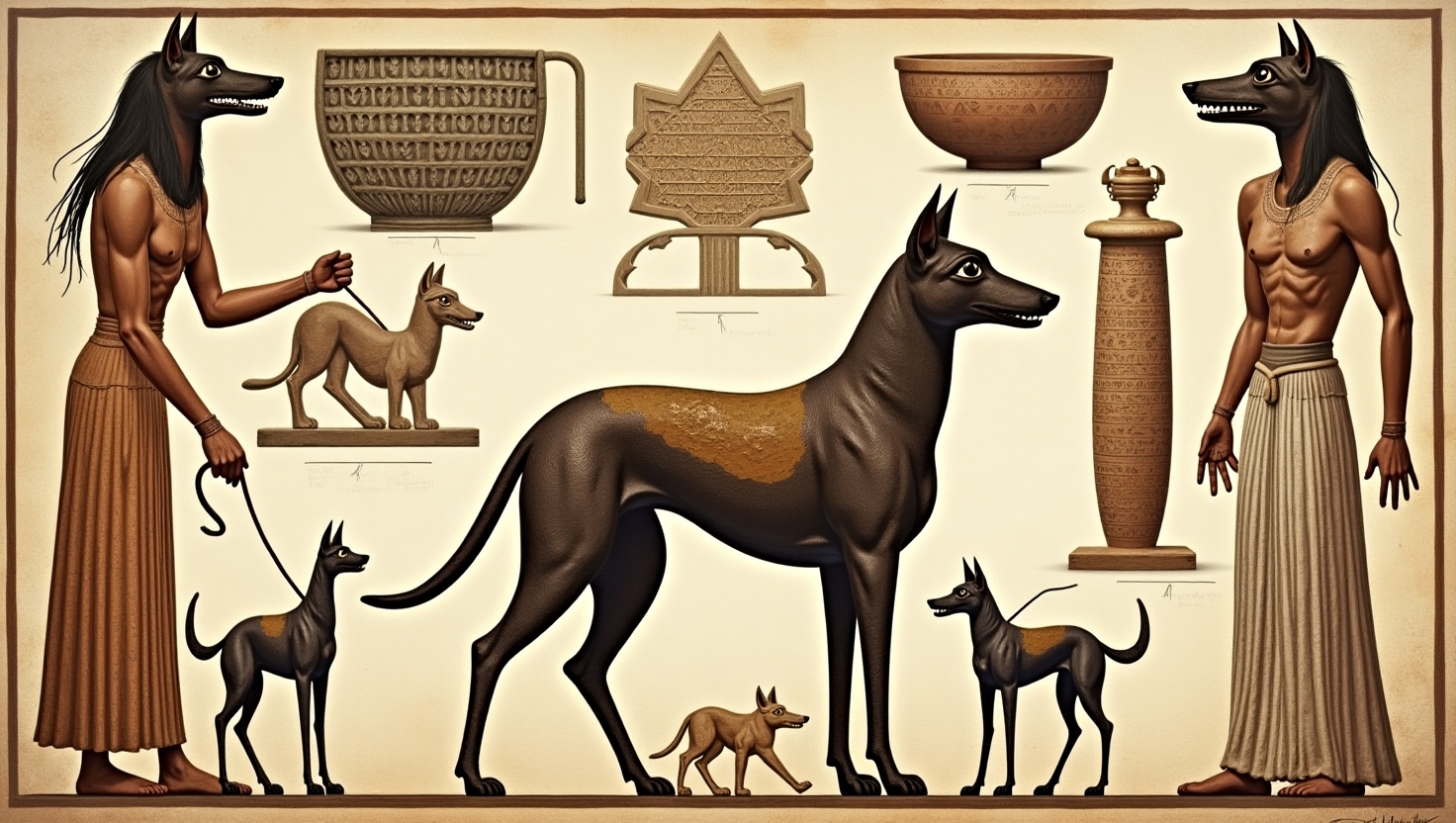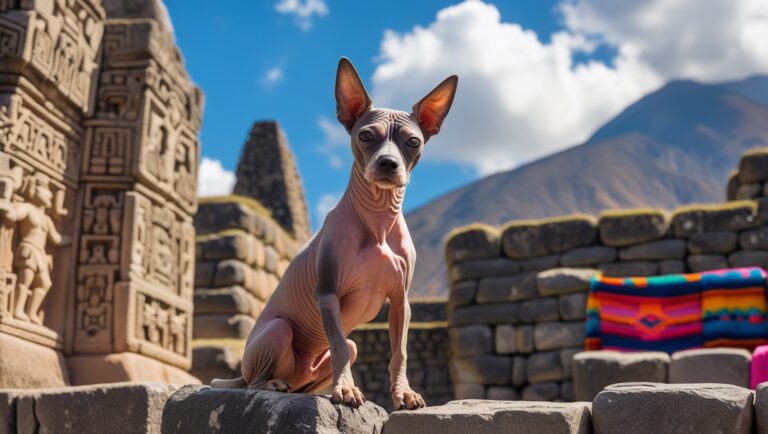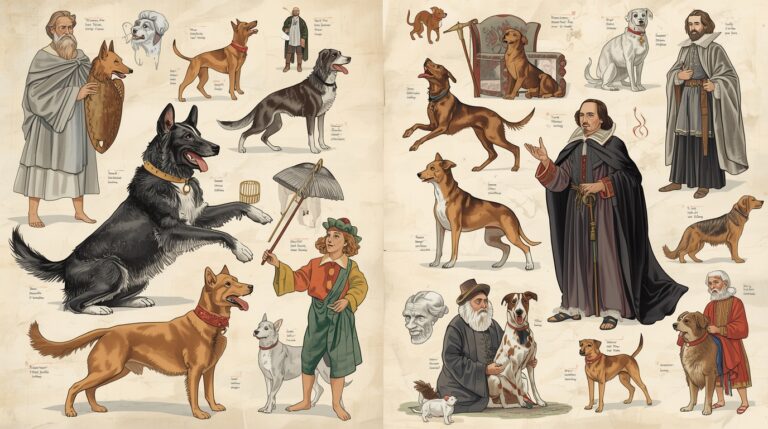Dogs in Mesopotamia and Sumer: Sacred Guardians, Healers, and Hunters

Introduction: The Canine Footprint in Ancient Mesopotamia
In the cradle of civilization—Mesopotamia, home to the Sumerians, Akkadians, Babylonians, and Assyrians—dogs held a unique place in the social and spiritual hierarchy. Far from being mere animals of utility, dogs in Mesopotamia and Sumer were intertwined with mythology, religion, healing practices, and ritual protection. From the temples of Gula to the royal courts of Akkadian kings, dogs appeared as sacred symbols, hunting aides, and even companions of deities.
Archaeological and textual records spanning from 3000 BCE to the late first millennium BCE provide compelling evidence of the canine-human bond in ancient Mesopotamia—revealing a rich interplay of zooarchaeology, cuneiform literature, and ritual symbolism.
The Domesticated Dog in the Fertile Crescent
The Fertile Crescent, where agriculture first emerged, was also one of the earliest regions to domesticate animals. Alongside sheep, goats, and cattle, the domesticated dog (Canis lupus familiaris) made its appearance by the Late Neolithic period (c. 8000–6000 BCE).
Zooarchaeological studies from sites such as Tell Brak, Nippur, and Ur have recovered canine bones, often within human habitation layers—evidence that dogs lived in close quarters with ancient Mesopotamians. These early dogs were likely used for guarding, hunting, and ritual purposes, a multi-functional role that evolved alongside the rise of city-states.
Dogs in Sumerian Urban and Rural Life
In both urban environments such as Uruk and rural settlements along the Tigris and Euphrates, dogs served vital roles. In the Sumerian economy, where storage of grain and livestock was essential, dogs acted as sentinels, guarding homes and food supplies from thieves, predators, or malevolent spirits.
Cuneiform administrative tablets sometimes mention dogs as temple property or part of household inventories. Although not all dogs were named, the appearance of canine figurines and skeletal remains in elite households suggests they may have also served as companions or status symbols, especially for the upper class.
Dogs as Guardians: Protectors of Homes and Temples
A recurring theme in Mesopotamian texts and art is the protective nature of dogs. Dogs were believed to possess an innate ability to detect supernatural threats—including evil spirits, demons, or sickness. As such, they were placed at thresholds: doorways, temple gates, and city walls.
In some temples, dog statues or figurines were buried beneath foundations or installed beside doorposts to serve as apotropaic symbols—magical deterrents warding off spiritual harm.
Dogs in Mesopotamian Religion
Religious texts and iconography reveal that dogs played significant roles in the ritual and mythological structure of Mesopotamian spirituality. Unlike in many cultures where dogs were impure, in Mesopotamia, they were associated with purification, healing, and divine intervention.
The Goddess Gula and Her Healing Hounds
The most prominent canine-linked deity in Mesopotamia was Gula, the goddess of healing and medicine. Often depicted seated on a throne with a dog by her side, Gula’s sacred animal symbolized protection and recovery. In Akkadian, Gula’s epithet was “Belet-Ani” or “Mistress of the Animals,” a title that reinforced her healing domain.
In temples dedicated to Gula, small terracotta dog figurines were offered by patients in hope of divine healing. These were found across sites like Isin and Nippur, and they often include inscriptions such as “To Gula, that I may be healed.”
Dog Imagery in the Temples of Inanna
Inanna, the powerful Sumerian goddess of love, war, and fertility, is occasionally shown in association with dogs—likely referencing their roles as war animals or protectors. Inanna’s role as a liminal figure between order and chaos aligns with the dog’s symbolic function of guarding thresholds and maintaining cosmic balance.
Dogs as Symbols of Healing and Purity
Dog saliva, known for its healing properties even today, was likely observed by Mesopotamians as a divine signal. Ancient texts describe dogs licking wounds, which was interpreted as a spiritual remedy, blessed by Gula or other deities.
Dogs were considered pure animals, capable of transferring sacred energy during healing rituals or temple ceremonies. They were never offered as sacrifices but were ritually present—unlike goats or bulls.
Dog Figurines in Ritual and Magical Contexts
Across Mesopotamia, especially in temple and healing contexts, archaeologists have found thousands of terracotta dog figurines. These range from abstract to realistic forms and served as:
- Votive offerings
- Household charms
- Apotropaic devices
Figurines were often inscribed with messages such as “May the dog of Gula protect this house” or “May the bite of death be kept away.”
Archaeological Evidence of Dog Burials in Nippur and Ur
Nippur, a religious center dedicated to the god Enlil, revealed dog remains buried near temples—suggesting ritual significance. At Ur, excavations led by Leonard Woolley uncovered canine remains buried alongside human tombs in the Royal Cemetery, dating to the Early Dynastic period (c. 2600 BCE).
Some dogs were buried in pits with carefully placed bodies, hinting at emotional or symbolic relationships between humans and canines.
Zooarchaeology of Canine Remains in Sumerian Temples
Modern zooarchaeological analysis of dog bones from Sumerian sites has uncovered:
- Different breeds: including medium-sized hounds, mastiff-like dogs, and smaller terrier-types
- Signs of injury or healing, indicating medical care
- Cut marks, suggesting postmortem processing, possibly for ritual not consumption
This evidence confirms both the functional and ritualistic roles of dogs in Mesopotamian temples.
The Role of Dogs in Cuneiform Texts
Dogs appear in a variety of cuneiform texts, including:
- Omens (Šumma ālu series)
- Healing spells
- Legal contracts
- Mythological epics
One Sumerian incantation reads:
“Let the dog of Gula stand watch at your door and keep the pestilence away.”
These texts confirm the dog’s role as protector, healer, and divine agent.
References to Dogs in the Library of Ashurbanipal
The Library of Ashurbanipal (7th century BCE), located in Nineveh, contains many Akkadian texts referencing dogs. In medical treatises, dogs are mentioned as part of rituals for:
- Exorcising demons
- Curing disease
- Ensuring safe childbirth
These spells often call upon Gula’s dogs, invoking their divine presence.
Dogs in Omen Literature and Incantation Series
In the Babylonian omen series, dogs are used as signs of the divine:
- “If a dog enters a man’s house and sleeps on the bed — misfortune will follow.”
- “If a white dog barks continuously — the gods are warning the city.”
Dogs functioned as oracles, interpreted by priests during ritual consultations.
Dog Symbolism in Cylinder Seals and Reliefs
Cylinder seals, used for stamping clay documents, sometimes depict dogs:
- Walking beside elite figures
- Chasing prey in hunting scenes
- Guarding temple gates
These tiny works of art emphasize the dog’s loyalty, functionality, and symbolic power.
Hunting Dogs of Akkadian Kings and Nobility
Hunting was a sport of kings, and dogs were essential companions. Reliefs from the Palace of Ashurbanipal show large molosser-type dogs attacking lions—part of ritualized lion hunts that symbolized the king’s cosmic power.
Dogs in these hunts wore collars and armor, indicating their elite status and specialized training.
Dogs in Daily Life: Companions or Tools?
While evidence supports elite dogs used for hunting and temple functions, less is known about dogs in the daily lives of commoners. Some domestic areas have revealed dog remains in homes, and a few clay figurines appear cuddled with children, suggesting that dogs also served as companions.
Comparative Roles of Dogs vs. Other Domestic Animals
Compared to cats, sheep, or oxen, dogs were:
- Not sacrificial animals
- Not associated with agriculture
- Used in healing and protection
- Recognized in both elite and religious spheres
This places them in a unique category—bridging spiritual, social, and functional dimensions.
Artistic Depictions of Dogs in Mesopotamian Art
Wall reliefs, especially from the Neo-Assyrian period, showcase muscular dogs in:
- Lion hunts
- Guard duties
- Processions with kings
These images reinforce the idea that dogs were status-enhancing animals, tied to power and control.
Canines in Sumerian Mythology and Oral Tradition
Sumerian myths occasionally reference dogs in allegorical ways:
- As guides to the underworld
- As spirit guardians
- As familiars of witches or priests
These references show how dogs were embedded in oral and literary traditions beyond ritual practices.
Ritual Cleanliness: Dogs in Healing Magic
Dogs were sometimes invoked to absorb impurities or “lick away evil.” They served as:
- Transference animals (absorbing disease)
- Gatekeepers during purifications
- Sacred witnesses in temple rites
These ideas were carried into later Babylonian healing magic.
Cultural Syncretism: Dogs Across Sumer, Akkad, and Assyria
As Mesopotamian cultures merged and evolved, so did the role of dogs:
- In Akkadian texts, dogs are called kalbu (dog) and linked to Gula
- In Babylonian rituals, dogs maintain healing roles
- In Assyria, they take on militaristic and elite symbolism
This shows the continuity and adaptation of canine reverence across millennia.
Tell Brak and Neo-Assyrian Ritual Dog Evidence
At Tell Brak, a major site in northern Mesopotamia, archaeologists uncovered dog skeletons buried with human infants, possibly as ritual protectors or spirit guardians.
In Neo-Assyrian cities, dog statues and figurines were found interred beneath doorways, maintaining their apotropaic purpose into the Iron Age.
The Evolution of Dog Status from Utility to Symbol
Over time, the dog transitioned in Mesopotamia from:
- Working animal → Ritual participant
- Household guardian → Sacred symbol
- Healer’s assistant → Divine familiar
These shifts mirror broader changes in Mesopotamian religion, politics, and domestic life.
Conclusion: The Sacred and Functional Dog in Ancient Mesopotamia
In Sumerian and Mesopotamian society, dogs were more than functional tools. They were:
- Agents of healing in the temples of Gula
- Guardians of homes and sanctuaries
- Hunting companions of kings
- Spiritual protectors invoked in incantations
- Cultural symbols embedded in art and mythology
The story of dogs in this ancient land is one of sacred partnership, a relationship that left its mark not just in clay tablets and temple walls, but in the enduring human-canine bond that echoes to this day.





